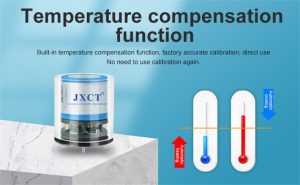Air pollution is a pressing global concern that affects the health and well-being of millions of people. Monitoring air quality is essential in understanding the levels of pollutants in the atmosphere and implementing measures to mitigate their adverse effects. Gas sensors play a vital role in this process by accurately detecting and measuring various pollutants present in the air. This article explores the significance of gas sensors in monitoring air quality, their working principles, and their contribution to ensuring a healthier and safer environment for all.
The Importance of Air Quality Monitoring:
Air pollution has detrimental effects on human health, ecosystems, and the environment. Exposure to pollutants such as particulate matter, nitrogen dioxide, ozone, sulfur dioxide, carbon monoxide, and volatile organic compounds (VOCs) can lead to respiratory problems, cardiovascular diseases, lung cancer, and other health issues. Additionally, air pollution contributes to climate change, damages vegetation, and degrades air quality indoors and outdoors. Monitoring air quality provides crucial data for policymakers, health professionals, and scientists to understand the sources, levels, and trends of pollutants, leading to effective strategies for pollution prevention and control.
Gas Sensors: Working Principles:
Gas sensors are devices that detect and quantify specific gases or volatile compounds in the air. They operate based on various principles, including electrochemical, semiconductor, optical, and metal oxide technologies. Each type of sensor is designed to detect specific gases or classes of pollutants. Gas sensors consist of sensing elements that interact with the targeted gases, often causing a measurable change in electrical conductivity, resistance, or optical properties. This change is then converted into an electrical signal that can be analyzed and interpreted.
Role of Gas Sensors in Air Quality Monitoring:
3.1. Outdoor Air Quality Monitoring:
Gas sensors are used extensively in outdoor air quality monitoring networks. These sensors are strategically placed across urban areas or near industrial facilities to measure pollutant levels continuously. They provide real-time and accurate data on pollutants such as nitrogen dioxide (NO2), ozone (O3), sulfur dioxide (SO2), carbon monoxide (CO), and particulate matter (PM2.5 and PM10). This information helps assess air quality, identify pollution hotspots, and evaluate the effectiveness of pollution control measures.
3.2. Indoor Air Quality Monitoring:
Gas sensors also play a crucial role in monitoring indoor air quality in residential, commercial, and industrial settings. Indoor air can contain pollutants from various sources, including cooking, cleaning agents, building materials, and electronic devices. Gas sensors detect and measure VOCs, carbon dioxide (CO2), carbon monoxide (CO), and other gases that can pose health risks if present at elevated levels. By monitoring indoor air quality, potential hazards can be identified, and appropriate ventilation or air purification measures can be implemented to protect occupants' health.
3.3. Industrial Emissions Monitoring:
In industrial settings, gas sensors are used to monitor and control emissions. These sensors detect and measure pollutants emitted by industrial processes, helping industries comply with air quality regulations and minimize their environmental impact. By continuously monitoring emissions, industries can identify inefficiencies, optimize production processes, and reduce pollutant releases. Gas sensors enable real-time feedback, facilitating prompt corrective actions and enhancing process efficiency and sustainability.
3.4. Personal Air Quality Monitoring:
Advancements in wearable technology have enabled the development of personal air quality monitors equipped with gas sensors. These portable devices allow individuals to monitor the air quality in their immediate surroundings and make informed decisions to mitigate exposure to pollutants. Personal air quality monitors can detect gases such as ozone, volatile organic compounds, and particulate matter, providing real-time information to help individuals avoid polluted areas and protect their health.
Emerging Trends and Future Developments:
Gas sensor technology is continuously evolving to address emerging challenges and improve air quality monitoring. Some notable trends and developments include:
4.1. Miniaturization and Integration:
Gas sensors are becoming smaller and more portable, allowing for integration into compact and wireless monitoring systems. This miniaturization trend enables widespread deployment of sensors in networks, enhancing spatial coverage and enabling fine-scale air quality mapping.
4.2. Sensor Networks and Internet of Things (IoT):
Advancements in communication technologies and the IoT have enabled the development of sensor networks for comprehensive air quality monitoring. These
 : +86 155 8830 2704
: +86 155 8830 2704 : jxdziot@gmail.com
: jxdziot@gmail.com
